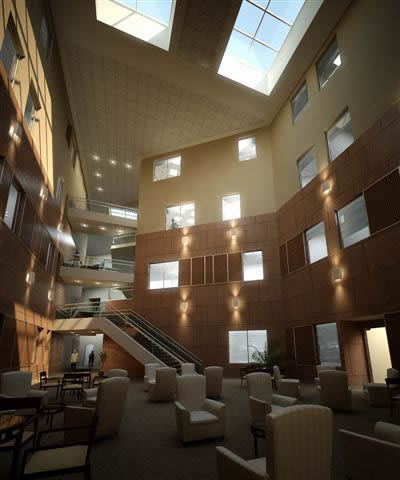user note...
While great efforts have been taken to provide accurate and complete information on the pages of CPEP, please be aware that the information contained herewith is considered a work‐in‐progress for this thesis project. Modifications and changes related to the original building designs and construction methodologies for this senior thesis project are solely the interpretation of Christopher Ankeny. Changes and discrepancies in no way imply that the original design contained errors or was flawed. Differing assumptions, code references, requirements, and methodologies have been incorporated into this thesis project; therefore, investigation results may vary from the original design.
|
|

| building statistics part I... |
| |
general building information |
| |
- Building Name: Virginia Commonwealth School of Business and Engineering
- Location: Richmong, Virginia
- Building Occupant Name: Virginia Commonwealth University
-
Occupancy/Function Types: Mixed-use environment for the schools of business and engineering; First level will contain cafés, cafeterias and common areas (with some classrooms) while the upper levels will be dedicated to classrooms, labs and faculty offices.
- Size: 245,000 SF
- Total Levels (above ground): 4
- Project Team
-
Construction Dates: The groundbreaking ceremony was held in November of 2005 and substantial completion is scheduled for December of 2007.
- Contract Size: $65 Million
- Project Delivery Method: Construction Manager
|
| |
architecture |
| |
- Architectural Features:
-
Two (2) full height (4-story) atriums, one in the school of business and one in the school of engineering.
-
A roof screen at a 10:12 pitch on top of building to conceal the mechanical equipment.
-
A large crescent-shaped inlet (approximately a 50-foot radius along the side of the building) housing a courtyard along with intricate brick/pavement walkways around the building.
- Applicable Codes:
- Virginia Statewide Uniform Building Code, 2000 Edition, Effective on 10/1/2003.
- Zoning Requirements: No strict zoning requirements were enforced for this project.
- Historical Requirements: No historical requirements were demanded.
|
| building statistics part II... |
| |
primary engineering systems
|
structural
|
- Steel:
- The building is comprised of a structural steel frame in sectors A and B (School of Business). Sectors A and B entail wide flange beams, which are spaced equally within the dimensioned bays, as well as wide flange columns with all splicing occurring on the third floor (at 5-ft) when necessary. At the crescent however, curved HSS-Tube steel was used for the beams and was also used for the columns. The bracing in these two sectors include diagonal, k, and vee, all using HSS-Tube steel (46 ksi).
|
- Concrete:
- For this project, the typical slab-on-grade consisted of 4-inch, normal weight concrete and a 5-1/2-inch thickness for steel framing floor deck construction. Concrete framing was also used in the northwest portion of the School of Engineering. This sector consists of 20-inch deep concrete joists, with a typical pan width of 53-inches. The concrete columns range in size from 16x16-inches to 32x32-inches; The beams have a depth of 25-inches and vary in width from 11-1/2-inches to the largest of 28-inches. In addition to these features, there are several full-height shear walls, ranging from 8-inches to 12-inches in thickness.
|
mechanical
|
- The mechanical system is housed on the rooftop of the building and is an all-water variable volume air-handling system. There is a total of 10 (ten) roof-top units meeting the following design criteria; 5 dedicated to the School of Engineering with a maximum SA of 20,800 CFM and a minimum OA of 8,000 CFM and 5 dedicated to the School of Business with a maximum SA of 26,000 CFM and a minimum OA of 10,000 CFM. There is also an AHU to service the chiller room. In addition to the mentioned RHU’s, there is 1 (one) double cross-flow cooling tower, with two cells at 500 nominal tons/cell, and 2 (two) centrifugal water-cooled chillers with a maximum capacity of 500 tons. All rooftop equipment and associated ductwork and piping are mounted so they, nor their supports, are exposed above the top of the architectural roof screen.
|
electrical
|
- The electrical system has a 480/277V, 3-phase service utility feed, which supplies the 4000A main switch board for the building (distributed radially). There is a total of four 208/120V transformers; one to service each floor. The system is backed up with a 1000kW, 3-phase480/277V diesel-powered generator.
|
supporty systems
|
- Fire Protection:
- The VCU School of Business and Engineering uses the following sprinkler systems: Automatic Wet-Type, Class 1 Standpipe Systems, Wet and Dry pipe systems, and a pre-action system in the elevator shafts.
- Transportation:
- The building features 4 hydraulic elevators. Elevator #1 is for service use, 5,000 lbs; Elevators #2, #3 and #4 are for public use, 3,500 lbs.
|
|
 |
|

